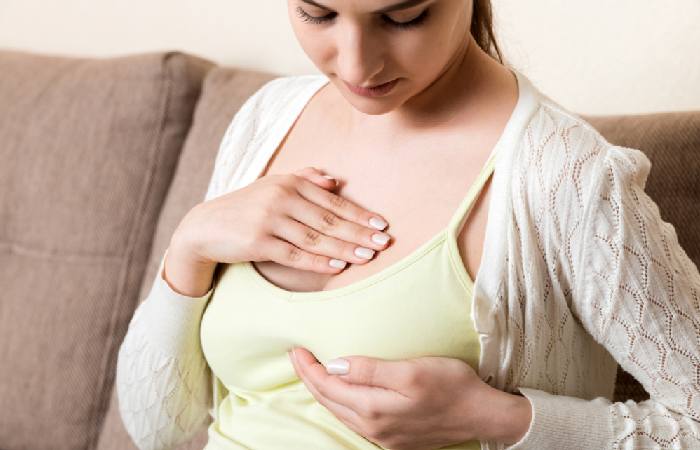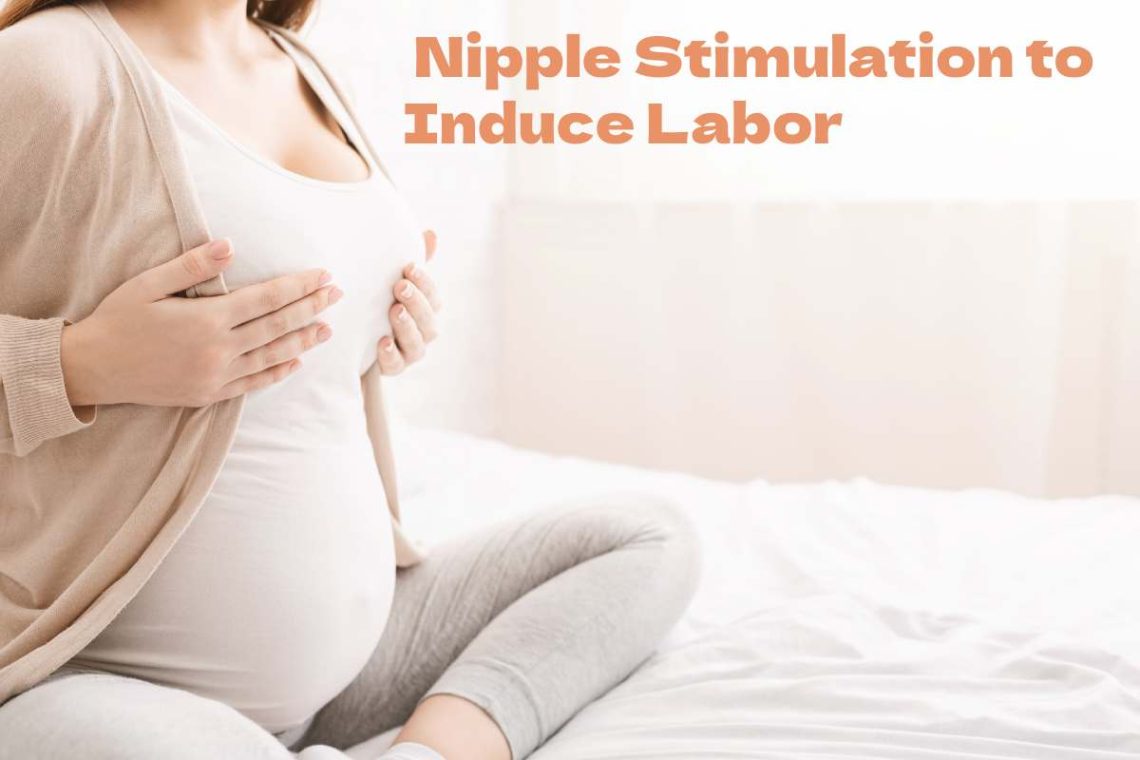Nipple stimulation to induce labor is quite possibly the most utilized strategy in the world. Would you like to know how to make it happen and what precautions are needed? Keep reading!
Numerous ladies might have issues during labor, so applying different measures to manage the interaction could be essential. In this sense, nipple stimulation is one of the best procedures to induce labor.
Stimulating the nipples can induce labor if your pregnancy is problem-free and you are due. But don’t expect it to work immediately. There is hardly any scientific research on the subject, only experience. For it to work at all, you must spend some time on it – you should ask yourself whether the effort is worth it!
If you want to give it a try, rub or squeeze your nipples. Massage mainly the outer brown area, not just the nipple itself. Place your hand on the areola and make circles with gentle but also intense pressure.
Nipple stimulation Method

Nipple stimulation can trigger contractions by rubbing or massaging the nipples directly or through clothing for about a minute. After a three-minute break, the following one-minute stimulation takes place. The mechanism of action is still largely unknown, but it is suspected that the labor hormone oxytocin is released. The hormone is also released when the baby drinks from the breast, which, among other things, triggers afterpains. This supports the uterus’s involution.
Stimulate your breasts three times a day for an hour. Massage the first breast for 15 minutes, then switch every 15 minutes until the hour ends.
The idea behind this is to simulate the baby sucking. Sucking triggers the production of oxytocin, a hormone produced by the body that, among other things, stimulates contractions.
Oxytocin also stimulates the birth process and is considered a cuddle hormone that strengthens the bond with the baby. Midwives sometimes use a synthetic oxytocin (syntocinon) to induce labor.
Nipple stimulation will only be successful if your body is ready and ripe for birth. At this point, the cervix shortens and opens for the birth process.
If your pregnancy is problem-free and you and your baby are healthy, you can try nipple stimulation. Overstimulation of your uterus is unlikely. Any overstimulation would be stressful for your child.
How Does Nipple Stimulation Work?
Nipple stimulation depends on the secretion of a hormone called oxytocin, which produces the reactions that will speed up the birth interaction. This hormone is synthesized in a part of the brain called the hypothalamus and is released into the bloodstream from the pituitary gland.
This strategy is likewise applied by those ladies who need to have a natural birth. This is because nipple stimulation is a substitute for the administration of synthetic oxytocin. Studies have revealed no relevant change in the effects of both.
Why does oxytocin release occur?
To comprehend how nipple stimulation can induce labor, It is essential to find out about oxytocin is fundamental. It is a hormone that all people secrete constantly.
Among its functions inside the body, the ejection of breast milk and the constriction of the uterine smooth muscles stand out. It is critical to remember that the uterus includes three unique layers: the perimetrium, the myometrium, and the endometrium.
Oxytocin follows up on the uterine muscle, causing it to contract and speeding up labor. Various stimuli can secrete this hormone, including stimulating the nipple during breastfeeding to facilitate milk release.
Manual stimulation simulates the physiological process explained previously, which explains the wide use of this technique before and during childbirth. Studies have shown that the hormone’s salivary levels increase shortly after the procedure.
Naturally, when a mother breastfeeds, the secretion of oxytocin increases.
Effectiveness of nipple stimulation in inducing labor

This technique has an extensive scientific foundation. A study conducted in Turkey showed that nipple stimulation reduces the time required for all phases of labor.
This research showed that around 8% of women in the control group needed an emergency cesarean section. The situation was not observed in the women who performed the technique and those who had a delivery without complications.
This strategy is likewise powerful during labor, or at least the ejection of the placenta. It has been shown to speed up the arrival of outstanding tissues and lessen the risk of post-pregnancy hemorrhages.
Factors to take into account
Nipple stimulation to induce labor is a technique that is safe in most cases. However, all reviews have been directed at ladies with low-risk pregnancies. In this sense, there isn’t sufficient proof of its impact on ladies with high-risk pregnancies.
Oxytocin’s constriction is typically gentle, so it actuates the birth cycle without influencing the child or the mother. Experts show that performing this procedure at home, without medical supervision, can safely speed up labor by a few days.
It could have a counterproductive effect on women who have high-risk pregnancies. Uterine contractions may be more severe and constant than expected. Among the maternal conditions that must be taken into account, the following stand out:
- Arterial hypertension.
- Gestational diabetes.
- Alterations in the amount of amniotic fluid.
- Abnormalities in the placenta.
- High-risk conditions, such as gestational diabetes, are contraindicated for nipple stimulation.
How do you perform nipple stimulation to induce labor?
It is essential to consult your doctor before performing this technique at home to confirm that there is no risk. Once the specialist’s approval is obtained, there are various ways in which it can be applied. The idea is to imitate the baby’s sucking as much as possible.
When babies are breastfeeding, they touch the mother’s areola frequently, so it is best to focus on this part during the process. In this sense, multiple stimulation tools are possible, from fingers and a breast pump to the mouth of your partner or an older baby.
Nipple stimulation to induce labor should be done on one breast at a time to avoid overstimulation. Additionally, each breast should be stimulated for a maximum of 5 minutes.
Once the process has been carried out, you must wait between 15 minutes and 1 hour to reapply the technique. This stimulation must be carried out at least three times a day, although it is advisable to consult a specialist since the necessary frequency may vary.
The method should be stopped when uterine contractions are persistent. Furthermore, if these contractions become annoying and painful, you should consult your doctor immediately.
A safe and effective mechanism
Nipple stimulation to induce labor is a very effective technique and is recommended by various specialists worldwide. It takes advantage of physiological conditions to achieve the desired effect and, at the same time, carries few risks.
If you want to have a natural birth, this is one of the best techniques that can be applied to speed it up. The effects generated in the body will be the same as those produced by synthetic compounds, and all phases of giving birth will be facilitated.
Conclusion
The partner can also stimulate the nipples to induce contractions – but only if a professional obstetrician is present and gives instructions. Nipple stimulation can stimulate contractions very strongly, so caution is advised. Like many other methods, it only works when the cervix is ready for birth, but it is very effective and works within an hour.

